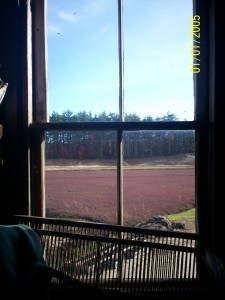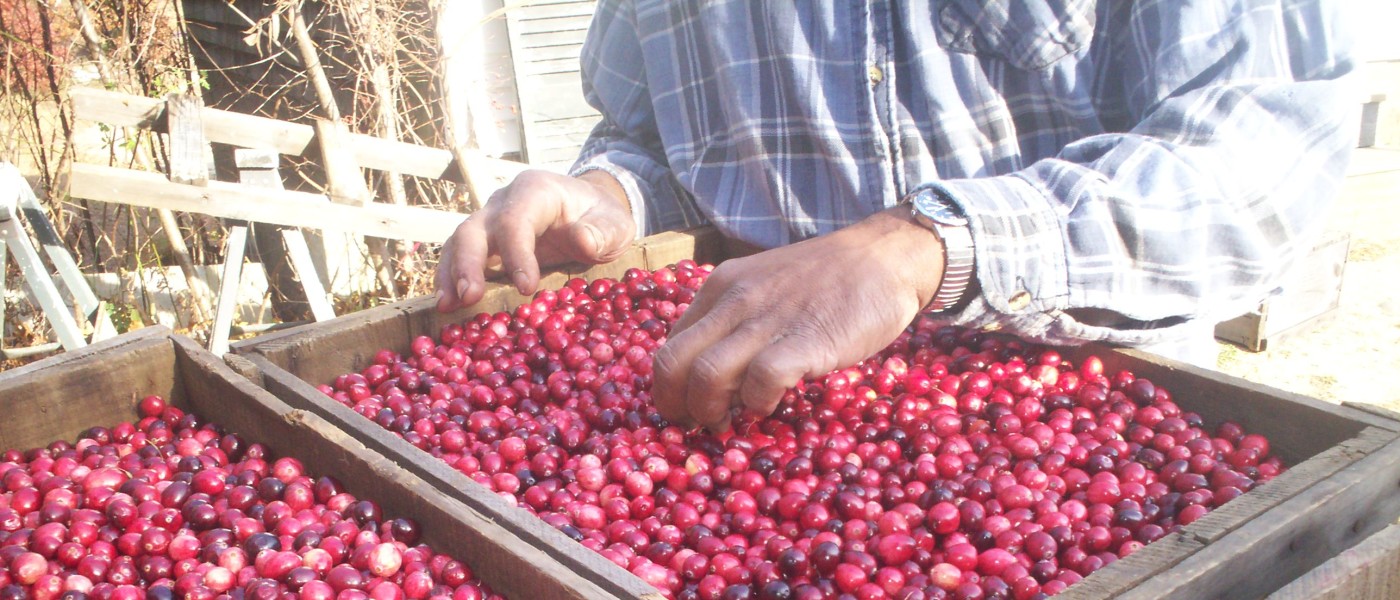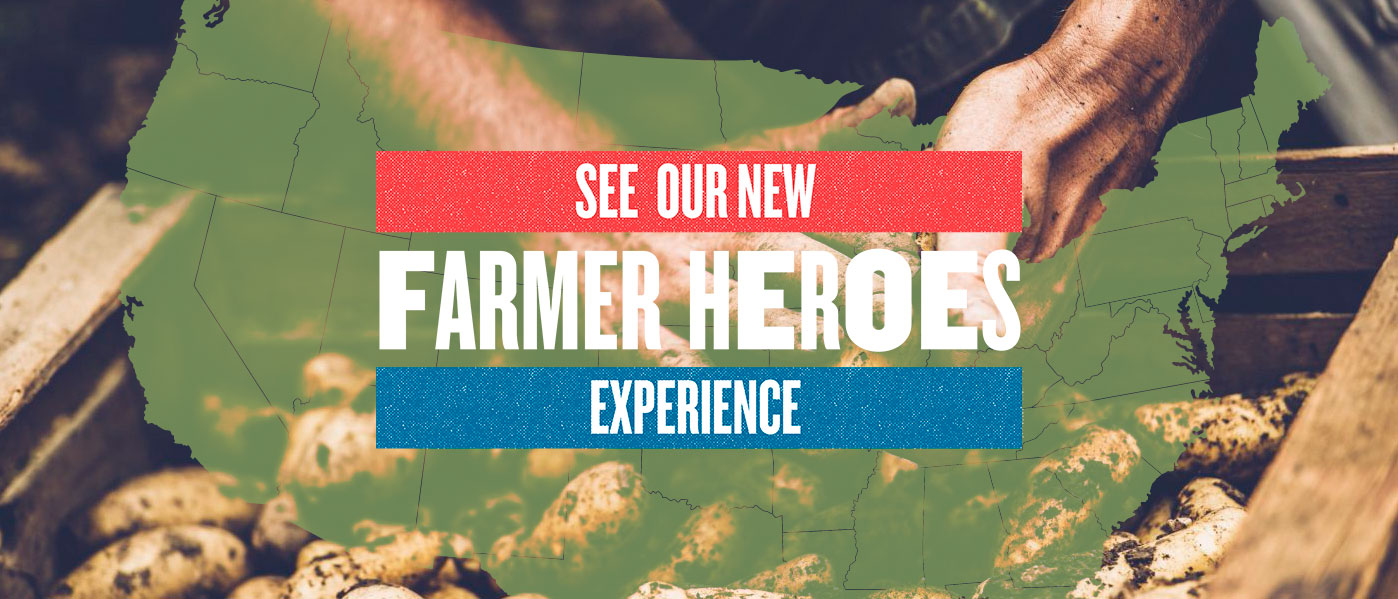Carver, MA
The cranberry, an important part of most Thanksgiving celebrations, is one of North America’s three native fruits that are grown commercially. They were first used by Native Americans as food, fabric dyes, and for healing purposes.
Jen Friedrich grows cranberries with Dom Fernandes, a third generation Cape Verdean cranberry grower and owner of Fresh Meadow Farms. Fresh Meadow Farms has a total of 25 acres along the south shore of Massachusetts in Carver, Kingston and Plymouth.
Originally from Ohio, Jen began her career in the green industry, but moved into farming after working at the University of Massachusetts cranberry station in East Wareham. Dom and Jen agree that growing organic was the way to go in order to diversify the farm’s market opportunities, along with just being a good way to steward the land.
 There is a challenge in growing organic cranberries because so many of the bogs share water, and therefore they also share pests and diseases. If your neighbor’s bog isn’t organic, it will be nearly impossible to make the transition in your own bog.
There is a challenge in growing organic cranberries because so many of the bogs share water, and therefore they also share pests and diseases. If your neighbor’s bog isn’t organic, it will be nearly impossible to make the transition in your own bog.
The demand for fresh, organic cranberries has increased dramatically in the past ten years. To be certified organic, the fruit must be produced without pesticides and herbicides. Dom and Jen continuously work on the natural balance necessary to prevent invasive weeds and insects.
Contrary to popular belief, cranberries grow on vines, not in water, but cranberries are a water intensive crop. Massachusetts is ideal for cranberry growing because of the abundance of water and its sandy soil. However, it can be hard to keep land in agricultural production because Massachusetts has a very high land value so cranberry growers are often at risk of being overrun by development.
The cranberry growing season runs April through mid-November each year. In the winter months, after the harvest, Dom and Jen flood the bogs and then sand them once ice has formed. This prevents the vines from drying out due to the bitter winter winds on the coast. It also promotes growth, improves drainage and controls weeds and insects. Cranberries are a perennial plant, so growers do not typically have to replant vines.
Much of the technology of turn-of-the-century processing still exists at Fresh Meadow Farms. Harvest begins at the end of September and runs through November. Jen and Dom use both wet- and dry-pick methods. Wet picking involves using floodgates: they are opened and water flows over the vines, just enough to allow the water reel to work. The water reels stir up the water with sufficient force to dislodge the ripened cranberries from the vines so that the cranberries float to the surface. The berries are corralled to one side of the bog and then they are removed from the water.
Dry picking involves scraping the berries off the vines using a walk-behind machine. The machine rotates through the vines to collect the berries, which are then stored in large crates. Only 10% of the cranberries grown in Massachusetts are harvested using the dry pick method.
During harvest, there are about eight people working in the sorting house where cranberries go through the ‘bounce test.’ The bounce test weeds out the unripe berries from the ripe ones. Those that bounce over a board are considered ripe and, as the final step, they are sent to a table to be visually inspected for color and imperfections.
The picked berries are sent to markets all over the country and Canada. Once a batch is sorted, it is immediately sold to market. The harvest season is a repetitive cycle of sorting and selling, ensuring a fresh product. Most of Fresh Meadow Farms organic crop is marketed under the Jonathan’s Organicslabel. Jen and Dom also sell at their roadside farm stand, the Plymouth Farmers Market and the Pawtucket Winter Farmers Market. If you’re lucky enough to be in cranberry country, try some fresh berries this year!



